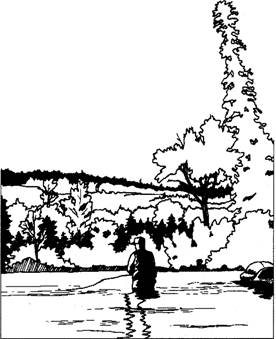2. The
program involves professionals from the Federal Department of
Fisheries and Oceans, Nova Scotia Department of Agriculture
& Fisheries, the Nova Scotia Salmon Association, and trained
members of community groups, who act as advisors and administrators
of the program.
3. The program is cooperative. Different groups, involving everyone
from schoolchildren to seniors, can work together on a project.
There are jobs for everyone, including those with physical disabilities.
Although some of the work takes place in or near the watercourse,
there are important research and reporting tasks that can by
done by someone who may not be able to participate in fieldwork.
4. The program is long term.
It is not a one-time clean up. Communities are asked to make
a commitment to "look after" what they adopt. Because the
program is cooperative and can involve many different sectors
of the community, this long-range task may not be as difficult
as it sounds.
|

|
| 5. The program is as
non-bureaucratic as possible. Paperwork and legalities exist,
but they are kept to a minimum.
6. The program relies on consultation. You, your group, and
your community play a big part in decisions that are made
about your watercourse. Such decisions are made in consultation
with habitat professionals. You will find that you can educate
professionals about your community while they can educate
you about water habitats. You will also find it necessary
to consult with other people who have a direct interest in
the watercourse, such as landowners.
7. The program has no formal starting time. However, the ideal
time to identify a watercourse and organize a group is in
the fall. During winter, your group can research the history
of the watercourse and plan the fieldwork for spring or summer.
8. The program is a team effort. You could Adopt-A-Stream
on your own, but you will most likely need assistance from
others. If possible, make your project a combined effort of
several groups. Community groups, schools, industries (including
service industries like hospitals, motels, restaurants), and
municipal government have often successfully cooperated in
the past. The more groups you involve, the better your chances
are for success. In addition, funding agencies often look
favourably on projects that are supported by different community
groups |
![]()
